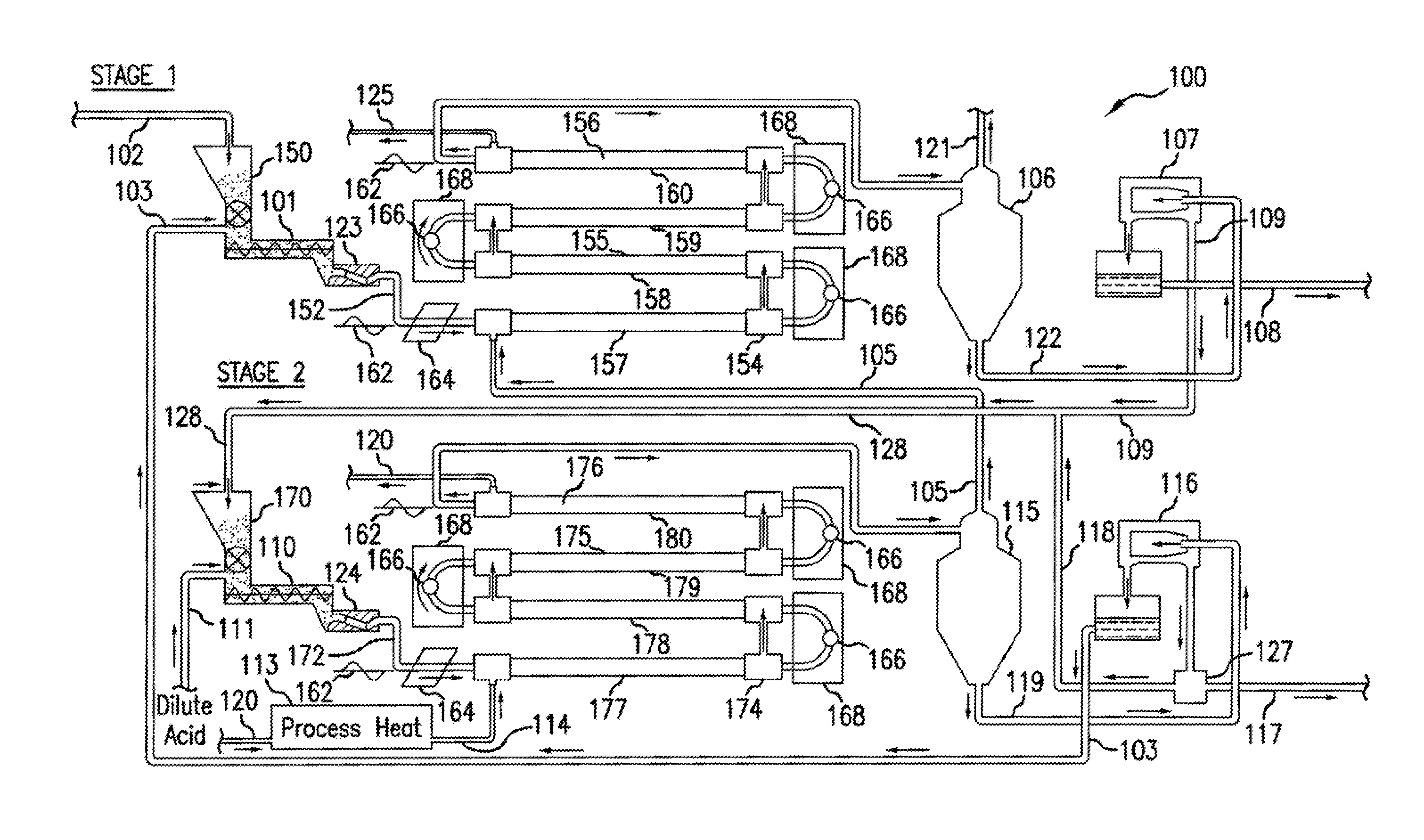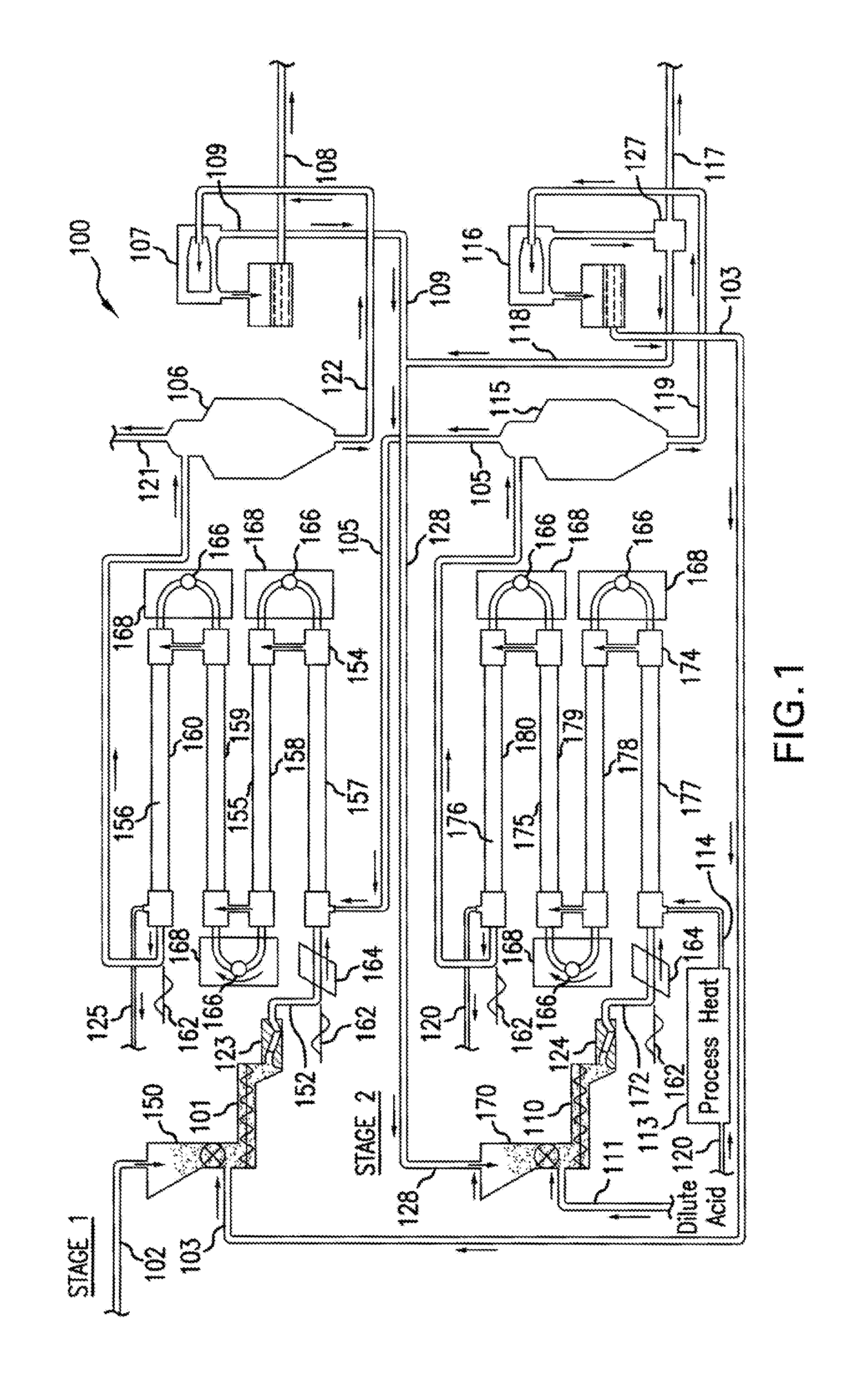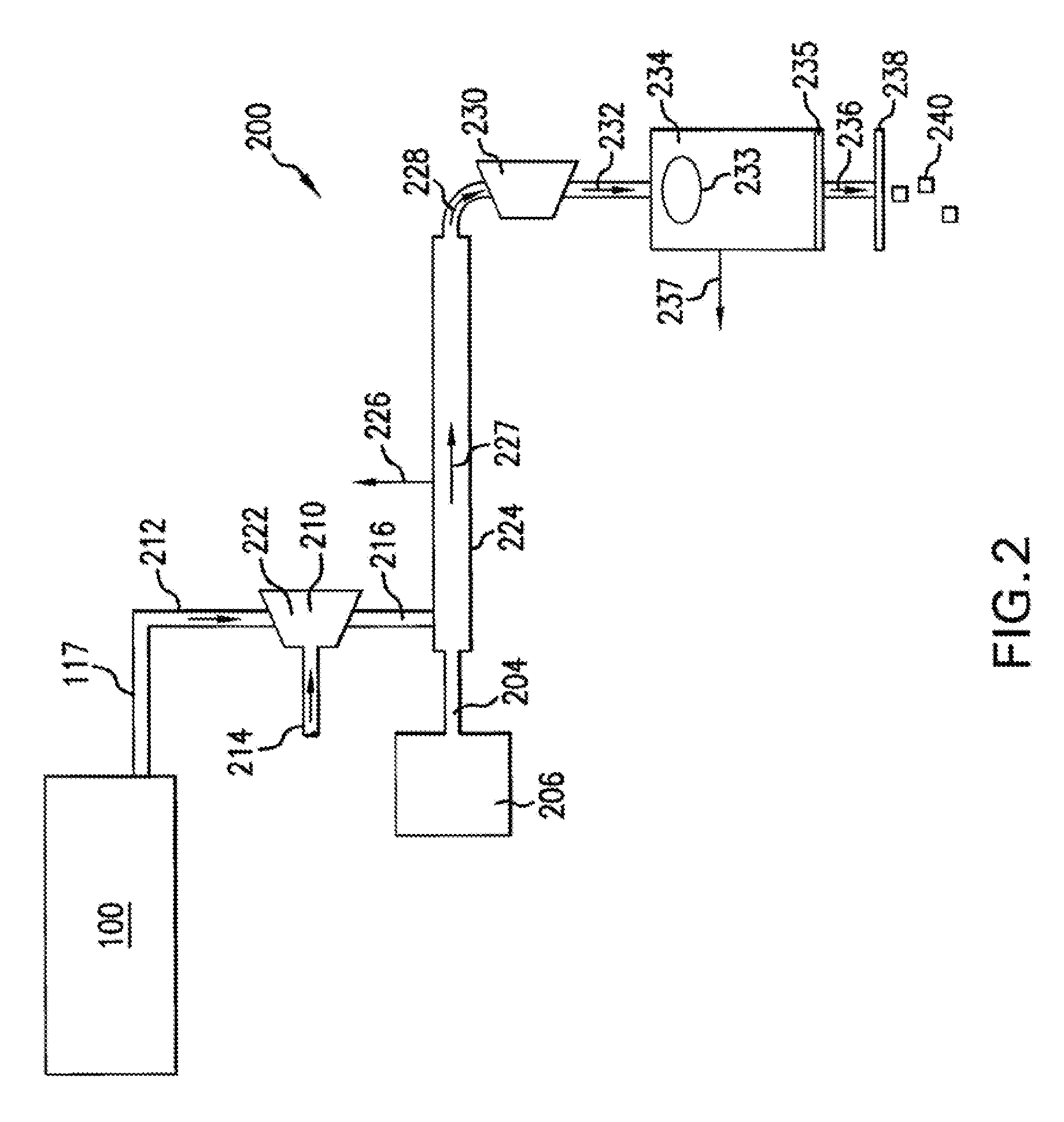Self-contained, high efficiency cellulose biomass processing plant
a cellulose biomass and processing plant technology, applied in the direction of mechanical vibration separation, peptides, enzymology, etc., can solve the problems of large cellulose biomass plants, inability to move from fixed locations, and high cost of transportation, so as to reduce catalyst and process heat, reduce reactor size, and improve efficiency and operation
- Summary
- Abstract
- Description
- Claims
- Application Information
AI Technical Summary
Benefits of technology
Problems solved by technology
Method used
Image
Examples
Embodiment Construction
[0016]FIG. 1 schematically illustrates a self-contained, high efficiency cellulose biomass processing plant 100 of the invention. The schematic diagram of FIG. 1 combines improvements of the invention with a two-stage system including two double-tube heat exchanger plug flow reactors and flash tank subsystems in series, as described in U.S. Pat. No. 5,411,594 to Brelsford, the disclosure of which is incorporated by reference. The improvements described below enable a higher efficiency, smaller size and portability of the plant 100.
[0017]The plant 100 includes a first stage 1 and a second stage 2. In the first stage 1, cellulose biomass feedstock, typically in the form of distillers wet grains (DDG's), is conveyed through an inlet 102 to a rotary feeder 150. A solution of dilute acid enters the plant 100 through inlet 103, and is mixed with the cellulose biomass feed in the slurry mixer 101 below rotary feeder 150.
[0018]The cellulose biomass feed may be derived from various sources o...
PUM
| Property | Measurement | Unit |
|---|---|---|
| Fraction | aaaaa | aaaaa |
| Magnetic energy | aaaaa | aaaaa |
| Energy | aaaaa | aaaaa |
Abstract
Description
Claims
Application Information
 Login to View More
Login to View More - R&D
- Intellectual Property
- Life Sciences
- Materials
- Tech Scout
- Unparalleled Data Quality
- Higher Quality Content
- 60% Fewer Hallucinations
Browse by: Latest US Patents, China's latest patents, Technical Efficacy Thesaurus, Application Domain, Technology Topic, Popular Technical Reports.
© 2025 PatSnap. All rights reserved.Legal|Privacy policy|Modern Slavery Act Transparency Statement|Sitemap|About US| Contact US: help@patsnap.com



